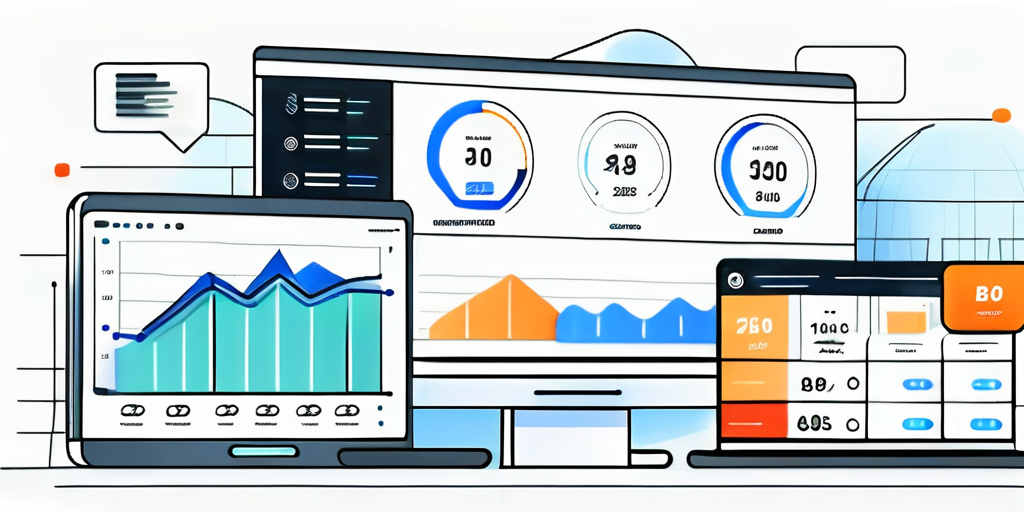Starting a dropshipping business can be an exciting and profitable venture. With the rise of e-commerce and the increasing demand for online shopping, dropshipping has become a popular business model for entrepreneurs. In this ultimate guide, we will provide you with all the information you need to start and run a successful dropshipping business.
Understanding Dropshipping
Before diving into the details of starting a dropshipping business, let’s first understand what exactly dropshipping is. In a traditional retail business, the retailer purchases inventory upfront and then stocks and ships the products to the customers. However, in a dropshipping model, the retailer doesn’t keep the products in stock. Instead, when the retailer receives an order from a customer, they simply pass it along to the supplier, who will then ship the products directly to the customer’s doorstep.

What is Dropshipping?
Dropshipping is a business model where the retailer doesn’t keep the products in stock. Instead, they partner with suppliers who handle the inventory and shipping. When a customer places an order, the retailer simply forwards the order details to the supplier, who will then fulfill the order and ship it directly to the customer.
Benefits of Dropshipping
Dropshipping offers several benefits to aspiring entrepreneurs. One of the main advantages is the low startup cost. Since you don’t need to purchase inventory upfront, you can start a dropshipping business with minimal capital. This means you can invest more in other areas of your business, such as marketing and customer acquisition.
Additionally, dropshipping allows you to operate your business from anywhere, as long as you have an internet connection. This flexibility gives you the freedom to work from home or while traveling, making it an ideal option for digital nomads or individuals seeking a location-independent lifestyle.
Another benefit of dropshipping is the wide selection of products. With dropshipping, you can offer a wide range of products to your customers without the need to store and manage inventory. This allows you to cater to different customer preferences and explore various niches. Whether you want to sell clothing, electronics, or home decor, the possibilities are endless.
Common Misconceptions about Dropshipping
Despite its benefits, dropshipping is often misunderstood. One common misconception is that dropshipping is a get-rich-quick scheme. In reality, building a successful dropshipping business requires hard work, dedication, and strategic planning. It takes time to find reliable suppliers, build a customer base, and optimize your operations.
Another misconception is that dropshipping is saturated and highly competitive. While it’s true that dropshipping has gained popularity, there are still plenty of opportunities to succeed. With effective marketing strategies and a unique selling proposition, you can differentiate your business and attract customers. By focusing on a specific niche or offering personalized customer experiences, you can stand out from the competition and build a loyal customer base.
Furthermore, dropshipping allows you to adapt quickly to market trends and customer demands. Since you don’t need to hold inventory, you can easily add or remove products from your online store based on popularity or seasonality. This agility gives you a competitive edge and the ability to stay ahead of the curve in a rapidly evolving market.
Planning Your Dropshipping Business
Planning is a crucial step in starting any business, including a dropshipping venture. This section will guide you through the essential aspects of planning your dropshipping business.
Before diving into the world of dropshipping, it’s important to understand that success doesn’t happen overnight. It requires careful consideration and strategic decision-making. So, let’s explore some additional factors to consider when planning your dropshipping business.
Identifying Your Niche
Identifying a profitable niche is a key factor in the success of your dropshipping business. A niche is a specific segment of the market that caters to a particular audience. When selecting a niche, consider your interests, knowledge, and target audience. It’s essential to choose a niche that has sufficient demand but is not overly saturated with competitors.
For example, if you have a passion for fitness and wellness, you might consider focusing on a niche within that industry, such as eco-friendly workout gear or organic supplements. By narrowing down your niche, you can better understand your target audience’s needs and tailor your products and marketing strategies accordingly.
Market Research and Competition
Conducting thorough market research is crucial in understanding your target market and identifying potential competitors. Analyze the demand for products in your niche, the demographics of your target audience, and the pricing and customer preferences in the market. Additionally, study your competition to identify their strengths and weaknesses and find ways to differentiate your business.
By delving deep into market research, you can uncover valuable insights that will shape your dropshipping business’s direction. You’ll gain a comprehensive understanding of your customers’ pain points, allowing you to curate a product selection that addresses their needs effectively. Furthermore, analyzing your competition will help you identify gaps in the market and develop a unique selling proposition that sets you apart.
Setting Your Business Goals
Setting clear business goals will help you stay focused and motivated throughout your dropshipping journey. Define your short-term and long-term goals, such as revenue targets, customer acquisition goals, and expansion plans. Regularly evaluate your progress and make necessary adjustments to keep your business on track.
Remember, goal-setting is not just about dreaming big; it’s about breaking down those dreams into actionable steps. By setting specific, measurable, attainable, relevant, and time-bound (SMART) goals, you can create a roadmap for success. Whether it’s reaching a certain sales milestone within six months or expanding your product range within a year, having well-defined goals will keep you motivated and accountable.
As you embark on your dropshipping journey, keep in mind that planning is an ongoing process. Continuously monitor market trends, adapt to changes, and refine your strategies to stay ahead of the competition. With careful planning and a solid foundation, your dropshipping business has the potential to thrive in the ever-evolving e-commerce landscape.
Setting Up Your Dropshipping Business
Now that you have planned your dropshipping business, it’s time to set up the foundation. This section will cover the essential steps in setting up your dropshipping business.

But before we dive into the nitty-gritty of setting up your dropshipping business, let’s take a moment to explore the fascinating world of dropshipping. Did you know that dropshipping has been around for centuries? In ancient times, traders would travel long distances to source products from different regions and sell them in their local markets. This concept of sourcing products from suppliers and selling them to customers without holding inventory is the foundation of dropshipping as we know it today.
Choosing the Right Suppliers
Choosing reliable suppliers is crucial for a smooth dropshipping experience. Look for suppliers who offer quality products, competitive pricing, and reliable shipping methods. Research potential suppliers, read reviews, and request samples to ensure their reliability and suitability for your business.
Imagine yourself embarking on a journey to find the perfect suppliers for your dropshipping business. You navigate through a vast sea of options, carefully evaluating each one to find the hidden gems. It’s like being an explorer, discovering new territories and forging partnerships that will shape the success of your business. Remember, the suppliers you choose will be your allies in this adventure, so choose wisely!
Creating Your E-commerce Website
Your e-commerce website serves as the face of your dropshipping business. Invest time and effort into creating a user-friendly and visually appealing website. Choose a reliable e-commerce platform, design an attractive layout, and optimize your website for search engines. Additionally, ensure that your website provides comprehensive product information, seamless navigation, and secure payment options.
Think of your e-commerce website as a virtual storefront, where customers can browse through your products and make purchases with just a few clicks. It’s like having a beautifully designed shop in the heart of a bustling city, attracting customers from all walks of life. The layout, colors, and overall design of your website can create a lasting impression on your customers, so make sure it reflects the essence of your brand.
Legal Considerations and Registration
Before launching your dropshipping business, it’s important to take care of legal considerations and register your business. Research the legal requirements and regulations in your jurisdiction and ensure compliance. Register your business name, obtain necessary licenses and permits, and set up a separate business bank account for financial transactions.
As you embark on this entrepreneurial journey, it’s crucial to navigate the legal landscape with caution. Just like a captain charting a course through treacherous waters, you need to be aware of the legal requirements and regulations that govern your business. By ensuring compliance and taking care of the necessary registrations, you can set sail confidently, knowing that you have a solid legal foundation.
Managing Your Dropshipping Operations
Once your dropshipping business is up and running, effective management is essential for its success. This section will cover the key aspects of managing your dropshipping operations.

Inventory Management
While you don’t physically stock inventory in dropshipping, efficient inventory management is still important. Regularly monitor the availability of products from your suppliers and ensure timely updates on your website. This will help you avoid selling unavailable products and maintain a positive customer experience.
Handling Orders and Shipping
Efficiently handling orders and shipping is crucial for customer satisfaction. Ensure that your order fulfillment process is streamlined and that the supplier promptly ships the orders. Communicate with your customers regarding order status and provide tracking information to keep them informed throughout the shipping process.
Customer Service and Support
Providing excellent customer service is vital for the success of your dropshipping business. Respond promptly to customer inquiries and resolve any issues or concerns they may have. Establish good communication channels with your customers and consider implementing a customer feedback system to continuously improve your products and services.
Starting a dropshipping business can be a rewarding journey. By understanding the dropshipping model, planning meticulously, and effectively managing your operations, you can build a successful and profitable dropshipping business. Use this ultimate guide as a roadmap to navigate through the various stages of starting and running your dropshipping venture. Good luck!

